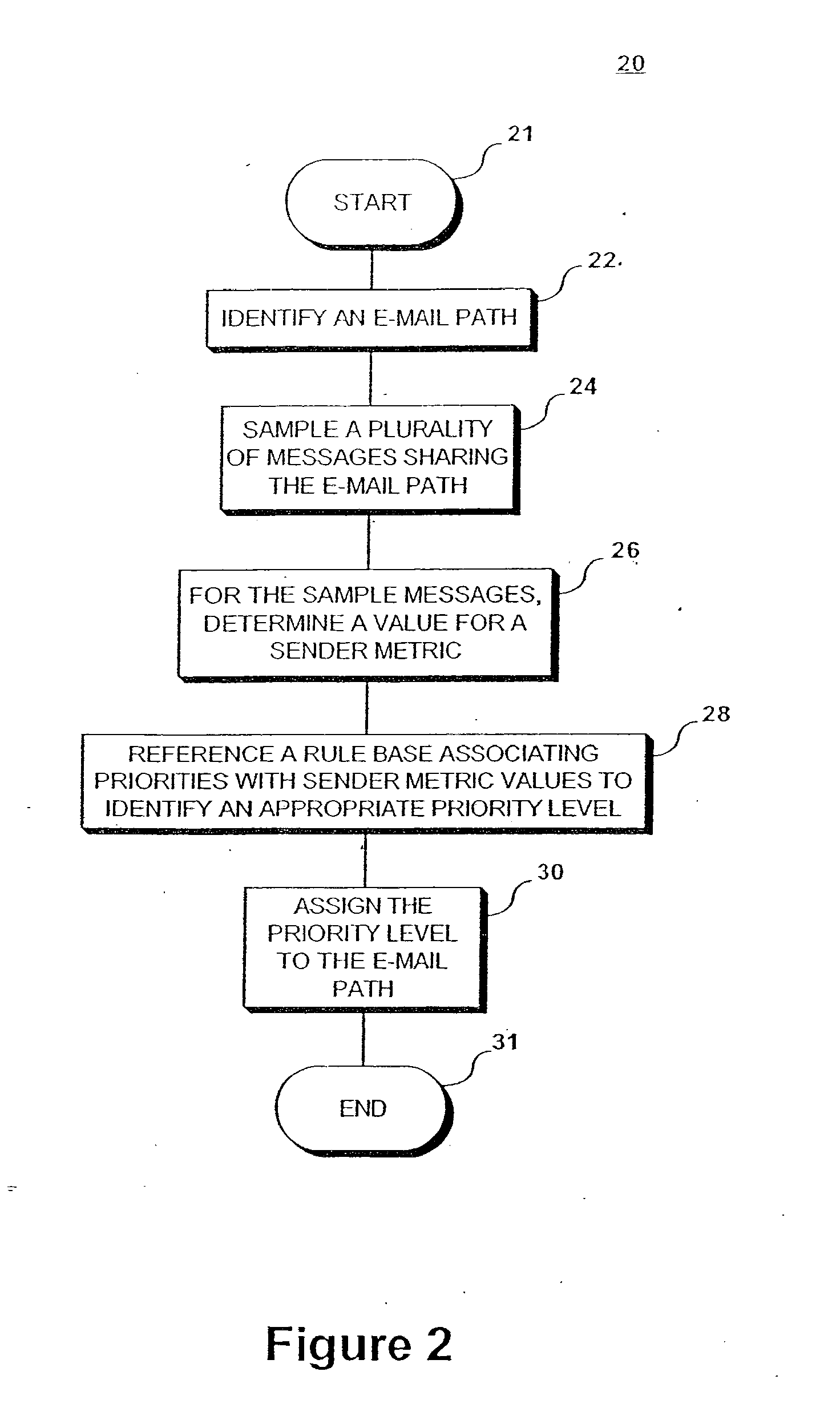System and method for controlling distribution of network communications
a network communication and distribution system technology, applied in the field of electronic mail messaging, can solve the problems of affecting the overall network resources, and mail servers that cannot ensure the quality of service (“qos”) and/or class, etc., to reduce or eliminate the burden on network/system resources, and the effect of reducing or eliminating the burden on the overall network resources
- Summary
- Abstract
- Description
- Claims
- Application Information
AI Technical Summary
Benefits of technology
Problems solved by technology
Method used
Image
Examples
Embodiment Construction
[0012] Conceptually, the present invention controls distribution of network communications, e.g. e-mail messages (collectively, “e-mail messages”), in a prioritized manner or pursuant to an industry supported standard regarding specific classes of service, e.g. BUSINESS PRIORITY (IMMEDIATE DELIVERY, high cost) or PERSONAL PRIORITY (QUICK DELIVERY, moderate cost), etc. This is achieved by controlling the allocation of network connections for delivery of messages, e.g. to delay allocation of requested connections until load parameters are met, until higher priority messages are delivered, etc. For example, e-mail messages may be distributed according to recipient or intermediary preferences. Accordingly, from the recipients' perspective, higher priority messages appear to be delivered / received first. Recipients and intermediaries can prevent overburdening of their systems' network resources due to delivery of spam messages or other relatively unimportant e-mail, e.g. commercial e-mail...
PUM
 Login to View More
Login to View More Abstract
Description
Claims
Application Information
 Login to View More
Login to View More - R&D
- Intellectual Property
- Life Sciences
- Materials
- Tech Scout
- Unparalleled Data Quality
- Higher Quality Content
- 60% Fewer Hallucinations
Browse by: Latest US Patents, China's latest patents, Technical Efficacy Thesaurus, Application Domain, Technology Topic, Popular Technical Reports.
© 2025 PatSnap. All rights reserved.Legal|Privacy policy|Modern Slavery Act Transparency Statement|Sitemap|About US| Contact US: help@patsnap.com



